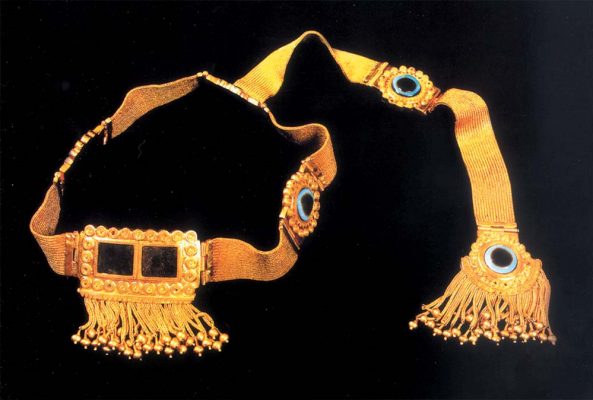In 1989 one of the world’s most astounding archaeological discoveries was made – intact royal tombs in the ruins of an Assyrian palace over 2,500 years old. Excavators opening the tombs found unbelievable quantities of highly crafted gold jewellery still on the bodies of the Queens of one of the wealthiest and most powerful empires the world has ever seen.
It was feared that the treasure was lost in the Gulf War, but international news headlines created a sensation announcing that the treasure was rediscovered in the National Bank of Iraq in 2003. In 2004 UEG was selected by the Iraqi Government and the Minister of Culture and granted a contract to create an extraordinary exhibition for a world tour to showcase the Gold of Nimrud.
UEG prepared an exhibition where the Gold of Nimrud was set in the context of the palace of Nimrud in which it was discovered through the creation of an exact facsimile of the throne room thus revealing to visitors the opulence and sophistication of the ancient Assyrian Kings and Queens. The exhibition also told the story of the long period of excavation of the palace including the contribution of the famous mystery writer Agatha Christie, the discovery of the Queen’s tombs, and the subsequent securing of the gold during the war.
Political unrest and internal conflicts within Iraq resulted in the Iraq Government not releasing the objects for exhibition that were scheduled to go on an International Museum Exhibition tour to 12 of the world’s leading Museums.

